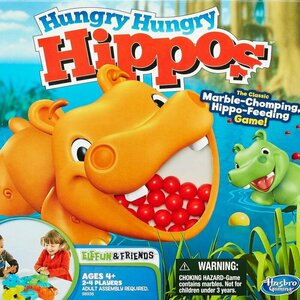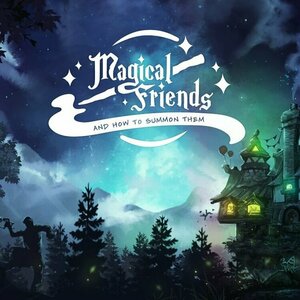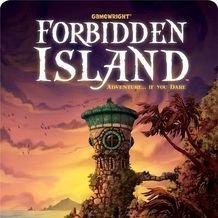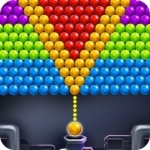
Power Pop Bubble Shooter Mania
Games and Entertainment
App
Start your engines and get ready to shoot and pop bubbles in this awesome online ball shooter game! ...

MONOPOLY Game
Games and Entertainment
App
Read on for important info below! **YOU VOTED & THE CAT’S OUT OF THE BAG** Thanks to the votes...
Purple Phoenix Games (2266 KP) rated Hungry Hungry Hippos in Tabletop Games
Jul 1, 2020
Ok so let me explain this game in great detail so that anyone may grab this and get playing. Setup the hippos around the board/disc/pool area. Fill up the marble wells with marbles (food for the hangry hippos). Choose a hippo to jockey. You are now setup.
So there aren’t really turns as everyone is playing simultaneously and marbles are going to be bouncing all over the board once launched into play. Your goal: eat as many marbles as you can until the marbles are all gone. Then count up your haul to determine the winner. Like, that’s it.
Components. Actually, the components in this one are really really good. I mean, you press a lever on the hippo’s butt (the tail maybe?) and it extends the head piece, comically, toward the center of the arena to gobble up delicious marble chow. The version we have all stores neatly together and fits in the box (YAY!) very well. I have zero complaints about the components. Well, okay, one complaint – but it’s NOT the game’s fault… is it? The marbles are wee and are definitely a choking hazard. So please please please be careful around children or dumb pets who may want to chomp them.
Though I have written this review in jest thus far as a game reviewer, the real reason I am putting this out there is because my son, age 3, absolutely loves this game. So much that I oftentimes am not allowed to actually press my hippo-butt-lever so that he may get all the marbles for himself. But, he’s having fun with board games and with his family. If that’s not the point of why people play games – to have fun and bond with people – then I do not know why people play games. This is a silly one, yes, but you have to have a few of these in your collection to just be crazy with the kids. So if you see it on the shelf, looking lonely, please pick up a copy. Your young ones will love it. I promise.

Backgammon - Deluxe
Games and Entertainment
App
Backgammon is one of the oldest board games or dice games for two players. The playing pieces are...
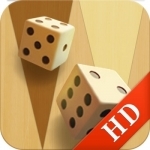
Backgammon - Deluxe HD
Games and Entertainment
App
Backgammon is one of the oldest board games or dice games for two players. The playing pieces are...

Play Beach Soccer Match - A real football tournament on world popular beaches 2015
Games and Sports
App
Playing soccer on soft sand is always enjoyable, here comes the realistic beach soccer game with...
Matthew Krueger (10051 KP) rated Coup in Tabletop Games
Jul 17, 2020 (Updated Jul 18, 2020)
I learn about this game through the Funhaus Channel. And personality wanted to buy it after watching it. It looked easy, fun and entertaining. So when i saw it at Pax i knew i had to by it. If you dont know what Coup is or never heard of it. Let me explain.
Coup came out in 2012 was published by Indie Boards & Cards for 2-6 players.
In Coup you are head of a family in an Italian city-state, a city run by a weak and corrupt court. You need to manipulate, bluff and bribe your way to power. Your object is to destroy the influence of all the other families, forcing them into exile. Only one family will survive...
Gameplay:
In Coup, you want to be the last player with influence in the game, with influence being represented by face-down character cards in your playing area.
Each player starts the game with two coins and two influence – i.e., two face-down character cards; the fifteen card deck consists of three copies of five different characters, each with a unique set of powers:
Duke: Take three coins from the treasury. Block someone from taking foreign aid.
Assassin: Pay three coins and try to assassinate another player's character.
Contessa: Block an assassination attempt against yourself.
Captain: Take two coins from another player, or block someone from stealing coins from you.
Ambassador: Draw two character cards from the Court (the deck), choose which (if any) to exchange with your face-down characters, then return two. Block someone from stealing coins from you.
On your turn, you can take any of the actions listed above, regardless of which characters you actually have in front of you, or you can take one of three other actions:
Income: Take one coin from the treasury.
Foreign aid: Take two coins from the treasury.
Coup: Pay seven coins and launch a coup against an opponent, forcing that player to lose an influence. (If you have ten coins or more, you must take this action.)
When you take one of the character actions – whether actively on your turn, or defensively in response to someone else's action – that character's action automatically succeeds unless an opponent challenges you. In this case, if you can't (or don't) reveal the appropriate character, you lose an influence, turning one of your characters face-up. Face-up characters cannot be used, and if both of your characters are face-up, you're out of the game.
If you do have the character in question and choose to reveal it, the opponent loses an influence, then you shuffle that character into the deck and draw a new one, perhaps getting the same character again and perhaps not.
The last player to still have influence – that is, a face-down character – wins the game!
Its a fun entertaining deduction party card game and a must play if you havent played it yet.
Purple Phoenix Games (2266 KP) rated Magical Friends and How to Summon Them in Tabletop Games
Sep 29, 2021
Disclaimer: We were provided with a prototype copy of this game for the purposes of this preview. The components pictured are not finalized, and could change after a successful Kickstarter campaign. I do not intend to rehash the entire rulebook, but rather provide a general overview of the rules and gameplay. For more information, head to the Magical Friends website. -L
Magical Friends and How to Summon Them (referred to as just Magical Friends from hereon out) is a strategic game of card drafting and variable turn order in which players take on the roles of mages attempting to summon the most magical creatures to the local tavern in order to win the Midsummer festival competition. Played over 8 rounds, players will take turns summoning creatures, moving them towards the tavern, using special creature abilities, and occasionally fighting off your opponents’ creatures. The player who gets the most creatures to the tavern by the end of the 8th round is the winner! To setup for the game, lay out the main board and summoning board in the center of the table. Take the 4 double-sided map tiles, randomly choose a side, and place them in their corresponding places on the main board. Shuffle the Summoning cards and reveal a number of cards, determined by player count, to create a market row and preview row. Each player receives a player mat, heart tokens, and Artifact Cards in their chosen color. Place the round marker on Round 1 of the main board, select a player to get the starting player token, and the game is ready to begin!
To start a round, first you will need to determine turn order. Each player has an identical deck of 11 Artifact Cards, numbered 1-11. The player who offers the most powerful (highest number) Artifact gets to act first in the round. The player with the starting player token chooses their card first, and places it face-up on their player mat. The next player, in clockwise order, will do the same. Here’s the catch though – once a number has been played, it cannot be played by anyone else for this round! So say I put choose my value 8 card – no other player may choose that card for this round. Once all players have chosen their Artifacts, determine the turn order for the round. The player with the highest valued Artifact goes first, then the next highest, and so on.
Once the turn order has been determined, it is time for players to take their turns! On your turn, the first thing you will do is to select a Summoning card from the Summoning board and take it into their tableau. The selected card tells you which friend (creature) you have summoned, and tells you how many moves/what types of movement you may take this round. After choosing your Summoning card, you will take any/all of the following actions: Summon a friend (bring its standee into play), use basic movement (as determined by your new friend), use bonus movement (from other cards), or use the abilities of any friends in your tableau. You may perform as many of these actions as you want and are able to perform. It is important to note that each friend may only use one basic movement and one bonus movement per round. So you can’t just move a single friend with every movement available in one turn.
Once you are finished performing actions, you will end your turn. Refresh the Summoning board by shifting cards down and refilling any empty creature slots. Play then moves to the player with the next highest valued Artifact card. When all players have taken their turn, the round ends. Move the Round marker up one spot, and pass the starting player token to the next clockwise player. A new round will then start with the turn order determination, beginning with the new starting player. After 8 rounds of play, the winner is crowned. Players score points for the number of their friends who reached the tavern, and the player with the highest score wins!
I’ll come right out and say that I really have enjoyed Magical Friends. There are lots of elements that I like and that work well together to create a fun, strategic, and engaging game. First, turn order determination. I love that the turn order isn’t set for the entire game, because that could really be a detriment to whomever would be last every round. Being able to ‘bid’ for turn order, in a sense, allows players to be proactive (or conversely, reactive) with their strategy. And after you’ve used an Artifact card in a round, it is discarded and cannot be used for the rest of the game. So you need to decide when it’s worth it to play your high value cards to hopefully act first, or if you’re willing to risk playing a mid-value card that might be out-bid by an opponent.
The other awesome strategic element are the friends in the game. Each friend is a different creature with different movement options and special abilities during gameplay. An important thing to note is that although every friend has a printed movement value on its card, you may only ever use that value on the round in which you summon that friend. So a Griffin, for example, lets you move 3 friends 2 spaces, which you may do when you first summon the Griffin. But in future rounds, the Griffin will only move based on the movements provided by the most newly acquired friend. Maybe you don’t necessarily want to summon a Mermaid, but the movement she offers is exactly what you need to get some friends to the tavern for scoring. It’s all a neat mix of strategy that you are changing with every turn. Along with the movements, each friend has a special ability that can be used on your turns. Some abilities allow you to move extra spaces, move opponents, or even slay creatures. When you slay a creature, you collect its heart token for endgame scoring, and the player who controlled that creature gets a Pity Power card (which provide bonus movement). You need to decide when to move which friends, and in what order to trigger your abilities. You must always be paying attention to the board layout and your opponents’ turns as they will help you determine your strategy for future turns.
Components. As I mentioned earlier, this is a prototype version of the game, but with that said, the components are pretty nice! The cards are sturdy, the text is clear, and the artwork is fun to look at. The main game board and summoning boards are colorful, and the creature standees are nicely sized for the board. I do have to say that I really like the heart tokens used to identify to whom each creature belongs on the board. The hearts slide over top of the standee and create a base of sorts to color-code every creature on the board. Just a neat little use of components that make the gameplay smooth. And how about the insert? It’s awesome! The standees are all stored, assembled, in a slotted inlay that allows for quick selection of creatures. I hope that’s something that makes it to final production because it really helps streamline the gameplay. Some of the wording in the rulebook could use some clarification, but I know that it is still a work in progress and continues to undergo edits. The only negative I would have to say is that 2 of the player colors are black and gray – and they are sometimes difficult to differentiate between. But changing one color should be an easy fix!
All in all, I was pleasantly surprised by Magical Friends. At first glance, I thought it would be a pretty simple ‘roll-and-move’ type game, but it proved to be much more strategic and engaging than I initially thought. The variable turn order, the movement rules/restrictions, and the unique friend abilities all work together to create a cohesive, thematic, and strategic game. I very much am looking forward to following the progress of Magical Friends and How to Summon Them on Kickstarter, and I encourage you to check it out as well!
the_mad_meeple (55 KP) rated Forbidden Island in Tabletop Games
Mar 10, 2020 (Updated Mar 10, 2020)
Whether you play it for the theme of an intrepid explorer searching an unknown island, or you are looking for an excellent family friendly cooperative experience (allowed by the ability to simply and effectively vary difficulty levels) this is a game for boardgamers of all shapes and sizes.

Devil Breaker : Rise
Games, Entertainment and Stickers
App
Enter the Kingdom of Pendragon and defeat the evil King! === GAME FEATURES === ■ An epic FANTASY...
